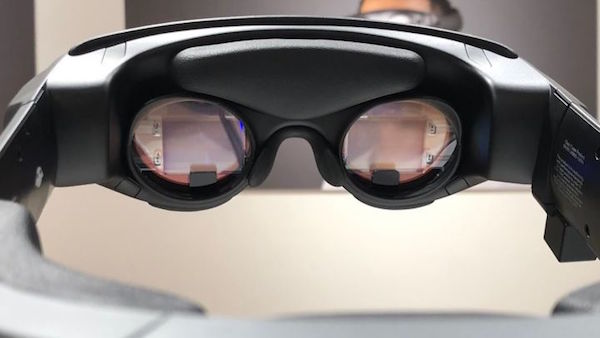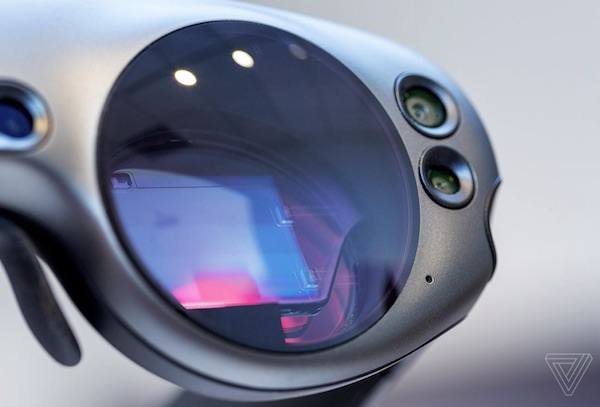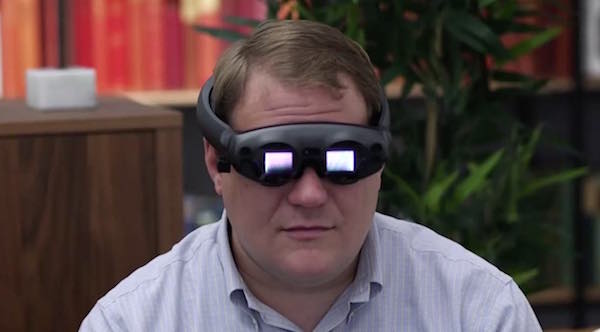The big day has arrived. After years and plenty of cash, Magic Leap has finally released its Magic Leap One AR headset for developers. Insisting that the device is consumer ready, the price seems to be the main differentiator to a real consumer product.
In a marketing push Magic Leap invited a wide range of journalists to the Florida headquarter to try the headset in live sessions. So far the reviews have been mixed.
Since I was not invited for a tour, I have to go by what we can see and what other reviewers report.
Magic Leap coming out after seven years (it was founded in 2011) and raising $2.3 billion in funding, we can say that this is the best funded start up in the AR space so far. They were very secretive over the years and the little we know is still not enough to judge if they are going to take over the world with their technology – or not.
So here is what we learned from the release.
The price is $2,295 for a unit aimed at developers. While the price is new, the goal to supply developers has been clear for several months. The price gets you three pieces; the Lightwear, which is the actual headset, the Lightpack, which houses the computer driving the headset and the handheld controller. We did report on some of the electronic details before, so I am going to skip over this part and focus more on the actual headset.
The Components of the Magic Leap One Headset
From a display standpoint there is very little we know other than they must be getting their displays from someone and I am sure they tried every vendor there is. What really is used in the soon shipping headsets will be interesting to see.
One of the reviewers, Todd Haselton from CNBC published his article about the review and it contained a part of a description supplied by Magic Leap, which is quite interesting. There is also a video available that shows him using the Magic Leap One.
“A Dynamic Digital Lightfield is a binocular display that can project digital objects into the world such that light enters the eye as if it were reflected from a real object. Our lightfield is biomimetic (mimics our biology/physiology). Magic Leap One creates a seamless experience where digital and analog lightfields combine into a single scene. For example, with Magic Leap One, you can render digital flowers in a physical vase so they can appear fresh every day.”
I am not really sure what they mean by digital and analog lightfields, since every lightfield is defined by amplitude and phase of every ray going through every point in space. However, I believe they are trying to distinguish between the lightfield that is created by the environment and the lightfield that is created by the electronic display. Anyway the key is that both lightfields will certainly overlay and create a somewhat less than realistic effect. When a bright object is created by the computer and overlaid on a dark environment the results are very acceptable, which may not be true in the opposite case. Some reviewers did comment that they could see things behind the computer generated content, which took away a bit of the realism.
On the other hand the field of view (FOV) for the Magic Leap One had already been released in the documentation for developers and is given as 40º horizontally and 30º vertically. This is definitely too little to watch a whale in the gym, as one of their first marketing pieces suggested. We can be sure that this is only the first step and that they are already working on the next version with a larger FOV.
 Magic Leap Headset, credit Todd Haselton, CNBC
Magic Leap Headset, credit Todd Haselton, CNBC
Magic Leap always referred to their technology as a lightfield chip, which seems to refer to a silicon photonics. It is not clear if this is an active image generating device or more of a combiner plate. The image above shows the two components as a dark rectangle and there see to be some connections on the side, which could hint at active functionality in this optical component. Very interesting indeed. To make it clearer, take a look at the image from The Verge that shows this even in more detail.
 Magic Leap One detail, credit The Verge
Magic Leap One detail, credit The Verge
This shows clearly some components mounted to the optical combiner, which I assume is the famous lightfield chip. As a guess, I assume that it positions the computer generated images at the correct depth to make the viewing experience more realistic and reduce eye strain. If this assumptions is correct, the imagers are in the relatively large area outside of the eyes. I am sure someone will do some exploratory surgery to figure out how it works.
As another point, we can see that there is not enough room to wear corrective glasses between the Magic Leap One and the eyes. This means they have to provide a corrective lens solution that will be attached to the headset itself. The website mentions this as well, listing corrective lens inserts as “coming soon”. In other words if you need corrective lenses, you need to use contact lenses.
The setup is projecting a lightfield into the user’s eyes and as we can see from some of the videos on the internet, the light does not only go to the eyes but also shines outwards, giving the users a robot like appearance.
 Todd Haselton wearing Magic Leap One, Credit CNBC
Todd Haselton wearing Magic Leap One, Credit CNBC
Interestingly this only shows up in some of the video shots and I wonder what causes this optical effect? If this is just an artifact of the video camera and the used lighting this should not be an issue, but if this is coming from the headset optics, it may be an issue. If the Google Glass was too geeky for people I think they will run away from this look even faster.
I am sure that we will learn much more about the underlying technology in the not so distant future. As more headsets are delivered to the market, technical details will become more widely available.
As a summary of many articles written about this device there is cautious optimism that Magic Leap is on the right track, but also a clear message that they are not there yet. (NH)

